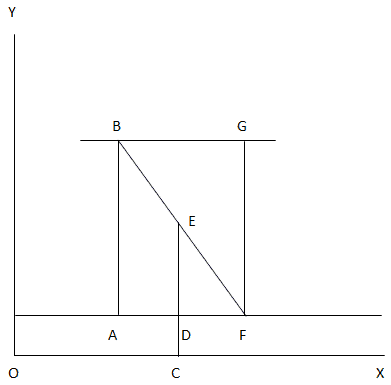The reorder level of stock is the fixed stock level that lies between the maximum and minimum stock levels. At the reorder stock level, an order for the replenishment of stock should be placed. In other words, the reorder stock level is the level of inventory at which a new purchase order should be placed. The reorder level of stock is generally higher than the minimum level to cover any emergencies that may arise as a result of abnormal usage of materials or unexpected delay in obtaining fresh supplies. The factors involved when fixing the reorder level of stock include: The reorder level of stock is calculated using the following formula: Reorder level of stock = Maximum consumption per day/per week etc. x Maximum delivery time Another formula that can be used is: Reorder level of stock = Minimum stock + Average consumption during normal delivery time. Choosing which formula to use depends on the information you are given in a problem. When calculating the reorder level of stock, it is worth noting that it is revised periodically by considering the factors that are likely to change supply and demand for goods. This example shows how to calculate the reorder level of stock. For a company, the maximum consumption is 15,000 units per week, while the maximum delivery time is 10 weeks. The formula for the reorder level of stock is the following: Re-order Level = Maximum per day/per week etc. x Maximum delivery time Therefore, the calculation can be performed as follows: 15,000 units x 10 weeks = 1,50,000 units. Some accountants do not differentiate between the ordering level and the minimum stock level, but others draw a distinction between the two. The ordering level is lower since, when it is fixed, no allowance is made for the margin of safety. The difference between the concepts is illustrated in the following diagram. In the above diagram:Reorder Level of Stock: Definition
Fixing the Reorder Level of Stock
Formula for Reorder Level of Stock
Example
Ordering Level and Minimum Stock Level

Reorder Level of Stock FAQs
The reorder level of stock is the fixed stock level that lies between the maximum and minimum stock levels. At the reorder stock level, an order for the replenishment of stock should be placed.
It includes materials consumption rate, margin of safety, normal delivery time (or lead time), minimum stock level to be maintained, cost of storage and interest on capital used in materials and provision for emergencies (e.G., Supply chain disruptions)
Reorder level of stock = maximum consumption per day/per week etc. X maximum delivery time
Reorder level of stock = minimum stock + average consumption during normal delivery time
The reorder level is the stock level of an item at which a business should order new supplies, while the reorder quantity is the number of items to be ordered.
True Tamplin is a published author, public speaker, CEO of UpDigital, and founder of Finance Strategists.
True is a Certified Educator in Personal Finance (CEPF®), author of The Handy Financial Ratios Guide, a member of the Society for Advancing Business Editing and Writing, contributes to his financial education site, Finance Strategists, and has spoken to various financial communities such as the CFA Institute, as well as university students like his Alma mater, Biola University, where he received a bachelor of science in business and data analytics.
To learn more about True, visit his personal website or view his author profiles on Amazon, Nasdaq and Forbes.













